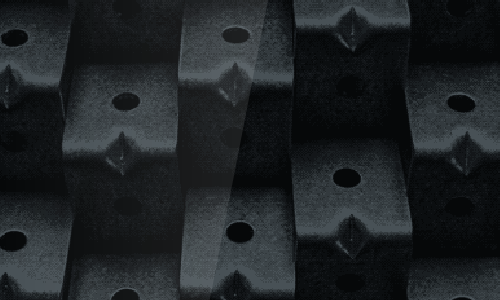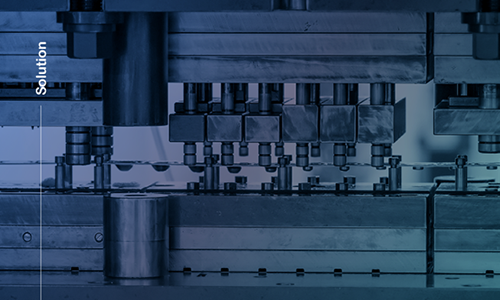Common Issues in Stamping Manufacturing
Application Field |Stamping ManufacturingStamping manufacturing is widely applied in various industries. It is essential to ensure the quality and high-precision stability of stamping dies and presses. By monitoring equipment status, predictive maintenance can be implemented.
Implementation Motivation
What Are the Common Issues in Stamping Manufacturing?
When automation failures occur in stamping, it can result in significant cost losses.
The machine used for stamping is called a press, and the mold used is called a stamping die. Stamping is typically performed on cold metal sheets, while forging involves shaping heated metal. (Source: Wikipedia)
Stamping manufacturing is widely used across various industries, including home appliances, automotive, industrial equipment, engines, construction, medical, and military sectors. Initially, in the 1980s, stamping parts were extensively used in mass-producing bicycles, and since then, they have been applied in numerous fields.
A stamping press (also known as a press machine) is a machine that applies pressure to deform metal and stamp it into various structural components. It is an essential tool for manufacturing metal parts and is commonly used in conjunction with stamping dies.
One of the most crucial aspects of stamping manufacturing is the relationship between the press and the die. Since automated stamping processes operate at high speeds, any issues that arise during production—such as die failures, press machine quality problems, or other equipment and production line design issues—can lead to significant material loss and increased production costs.
Key Challenges
How to Diagnose the Stamping Manufacturing Process?
The Quality of Stamping Dies Has a Significant Impact on Stamping Manufacturing
In stamping production, die quality plays a critical role in ensuring product consistency, and die failure is one of the most common issues in stamping manufacturing. Common die issues include deformation, wear, breakage, chipping (edge damage), improper heat treatment, and incorrect material selection.

Once a die failure occurs, production costs inevitably increase, and subsequent manufacturing processes are also affected. Furthermore, the more complex the die structure, the higher its cost, making production expenses considerable. Therefore, early detection of die quality issues is crucial in preventing a wide range of stamping manufacturing problems.
The Quality of Stamping Presses Directly Affects Product Quality and Precision
Stamping presses are high-risk manufacturing machines that operate using motor-driven power systems with various transmission mechanisms and processing methods. They are used to mass-produce metal parts while maintaining consistent quality standards.
The precision of a stamping press affects the lifespan of the die, the accuracy of the processed products, and ultimately, production costs and quality. Therefore, regular monitoring of the press and its associated equipment is essential to ensure the accuracy of the dies and products, maintain machine stability, and extend the lifespan of the equipment while enhancing workplace safety measures.
Execution Goals
How to Diagnose the Stamping Manufacturing Process?
#Real-time Monitoring of Stamping Dies to Ensure Process Quality
The lifespan of a stamping die is reduced with each production cycle due to repeated manufacturing actions. Since stamping involves a high volume of repetitive operations, real-time monitoring during the production cycle is essential to maintain product yield and prevent unexpected equipment downtime. This ensures smooth operation and effective quality control throughout the manufacturing process.
#Early Detection of Defective Products to Prevent Large-scale Waste
Stamping is a high-speed, large-scale repetitive process. By utilizing real-time monitoring, users can track the stamping line and assess the condition of the dies. This enables early detection of defects, preventing the production of a large volume of defective or scrap materials, ultimately reducing unnecessary production costs and improving the efficiency of the manufacturing line.
#Identifying Structural Issues in Stamping Presses to Ensure Quality
When key components such as the crankshaft, ram, springs, and gears in a stamping press become unstable, monitoring structural vibrations can help identify abnormal patterns. By analyzing these vibration patterns, potential structural issues can be diagnosed, allowing for predictive maintenance and improved equipment quality management.

Real-time Process Quality Monitoring

Preventing Defective Product Output

Providing Predictive Maintenance Insights

Long-term Production Line Monitoring
How to Execute
Stamping Process: Press Machines and Molds
In the stamping production process, monitoring both molds and press machines is crucial. By using the OLVMS®-ML Machine Learning Intelligent Monitoring System, the upper mechanism and mold can be monitored in two separate channels at regular intervals. This allows for the identification of mechanical structure issues, ensures product precision, and enhances the overall quality management of press machine equipment. Monitoring the process also helps assess the health status of molds.
VMS-ML Robotic Arm Monitoring System



